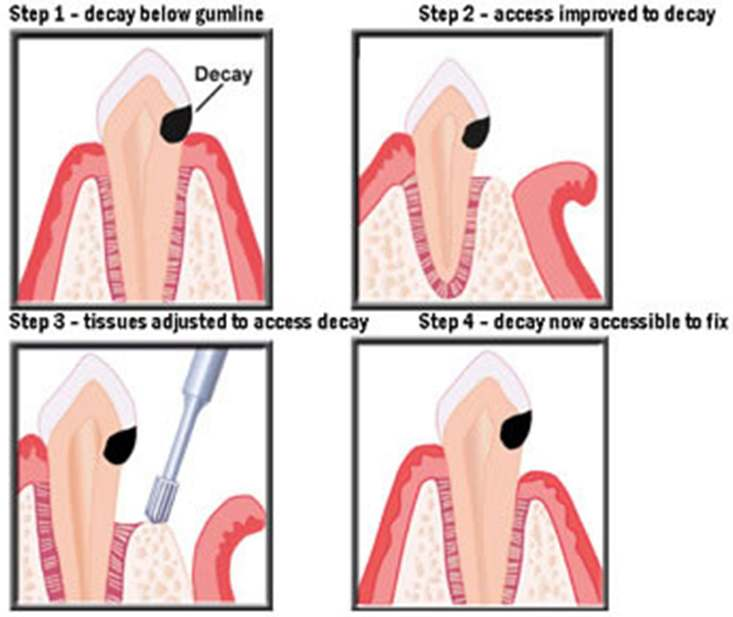A quick overview of crown lengthening. Once the Decay is acessable, a permanent crown or filling can be placed.
Crown lengthening is a dental procedure most often performed by a periodontist where an incremental amount of bone and tissue is removed from a tooth's gum line. This is most commonly used to reveal more tooth structure and facilitate the placement of a crown. If a tooth has deep decay or a fracture to the bone level, creating a good seal between tooth and crown is impossible. In order to save the tooth, the "crown" (portion of tooth above the gum line) has to be "lengthened," at the expense of the root. Crown lengthening is also performed on the anterior teeth for esthetic reasons. Uneven gum lines and "gummy" smiles can sometimes be fixed through this procedure. Many times, this must be followed up with crowns or veneers to create a cosmetic appearance.
While crown lengthening allows us to save teeth that would otherwise need to be extracted, it is not without potential drawbacks. Lowering the gum and bone level on a tooth can compromise its long term stability in the jaw. By gaining length in the tooth crown, the roots become gradually shorter and less anchored in bone. This procedure can also negatively affect the adjacent teeth as well. The periodontist needs to create a natural bone contour, and will often need to adjust around the neighboring teeth to make a smooth transition.
Often times, crown lengthening is only one of a few treatment options. Teeth can also be extruded using orthodontics to create more crown structure. Likewise, a tooth with a questionable longevity can be replaced with a implant in many scenarios. Only a comprehensive dental exam will reveal what can and needs to be done to save a tooth. To schedule an exam or find out about more dental treatment options, please give our office a call!


